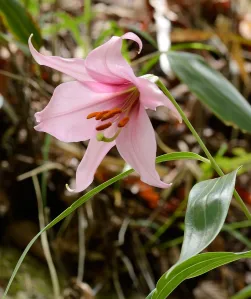កក្កដា . 12, 2024 08:31 Back to list
Apple pollination services offered to improve crop yield and fruit quality.
Apple pollination plays a vital role in the reproductive process of apple trees. Pollination is the transfer of pollen grains from the male reproductive organ of a flower to the female reproductive organ. This process is essential for the production of fruits and seeds. Apple trees rely on pollinators such as bees, butterflies, and other insects to transfer pollen between flowers. However, in recent years, there has been a decline in pollinator populations, leading to a decrease in apple yields.
To combat this issue, apple growers have started to use artificial pollination methods to ensure a successful harvest. One of the most common methods is hand pollination, where workers manually transfer pollen from one flower to another using a small brush or cotton swab. This method is time-consuming and labor-intensive but can significantly increase fruit set and yield.
Another method that is gaining popularity is the use of pollen dispensers or pollination bags. Pollen dispensers contain a controlled amount of pollen that is released onto flowers at specific times. This method is more efficient than hand pollination and can be easily implemented on a larger scale. Pollination bags are used to cover individual flowers, protecting them from cross-pollination and ensuring that each flower receives the necessary amount of pollen

apple pollination method service. In addition to artificial pollination methods, apple growers are also focusing on creating pollinator-friendly environments. This includes planting wildflower strips, hedgerows, and other pollinator-attracting plants around apple orchards. Providing a diverse and abundant source of nectar and pollen helps support pollinator populations and ensures successful pollination. Furthermore, apple growers are working closely with beekeepers to promote the health and well-being of honeybee colonies. By providing beekeepers with a safe space to keep their hives near apple orchards, growers can increase pollination rates while supporting bee populations. Some apple growers even rent honeybee hives during the bloom season to ensure a sufficient number of pollinators are present. Overall, apple pollination is a crucial process that directly impacts the quality and quantity of apple yields. With the decline in pollinator populations, apple growers are turning to artificial pollination methods and creating pollinator-friendly environments to ensure successful pollination. By utilizing these methods and practices, apple growers can increase their yields and contribute to the conservation of pollinator species. It is essential for growers to continue to innovate and adapt to new methods to ensure the continued success of apple pollination.

apple pollination method service. In addition to artificial pollination methods, apple growers are also focusing on creating pollinator-friendly environments. This includes planting wildflower strips, hedgerows, and other pollinator-attracting plants around apple orchards. Providing a diverse and abundant source of nectar and pollen helps support pollinator populations and ensures successful pollination. Furthermore, apple growers are working closely with beekeepers to promote the health and well-being of honeybee colonies. By providing beekeepers with a safe space to keep their hives near apple orchards, growers can increase pollination rates while supporting bee populations. Some apple growers even rent honeybee hives during the bloom season to ensure a sufficient number of pollinators are present. Overall, apple pollination is a crucial process that directly impacts the quality and quantity of apple yields. With the decline in pollinator populations, apple growers are turning to artificial pollination methods and creating pollinator-friendly environments to ensure successful pollination. By utilizing these methods and practices, apple growers can increase their yields and contribute to the conservation of pollinator species. It is essential for growers to continue to innovate and adapt to new methods to ensure the continued success of apple pollination.
Latest news
-
Eco Fruit Paper Bags for Peak Freshness | Durability Focused
NewsJul.31,2025
-
Pollen Peach Tree for Pure Pollination and High-Quality Peach Pollen
NewsJul.30,2025
-
Premium Cherry Pollen for Pure Pollination & Different Types
NewsJul.30,2025
-
Artificial Pollination Solutions for Various Plant Pollen Types
NewsJul.29,2025
-
Artificial Pollination Solutions for All Plant Pollen Types
NewsJul.29,2025
-
Premium Plant Pollen for Pure Pollination & Pollen Block Solutions
NewsJul.29,2025